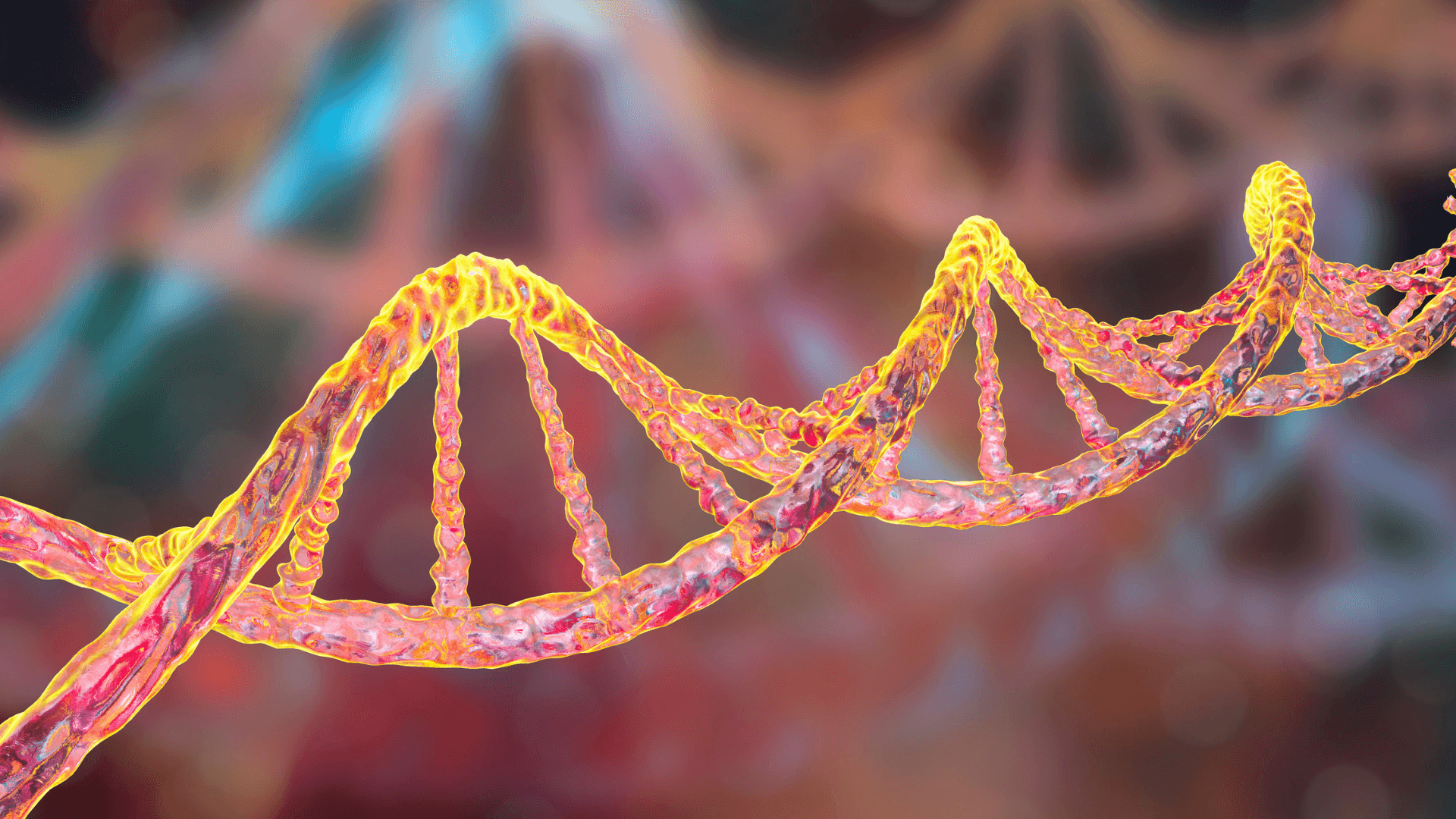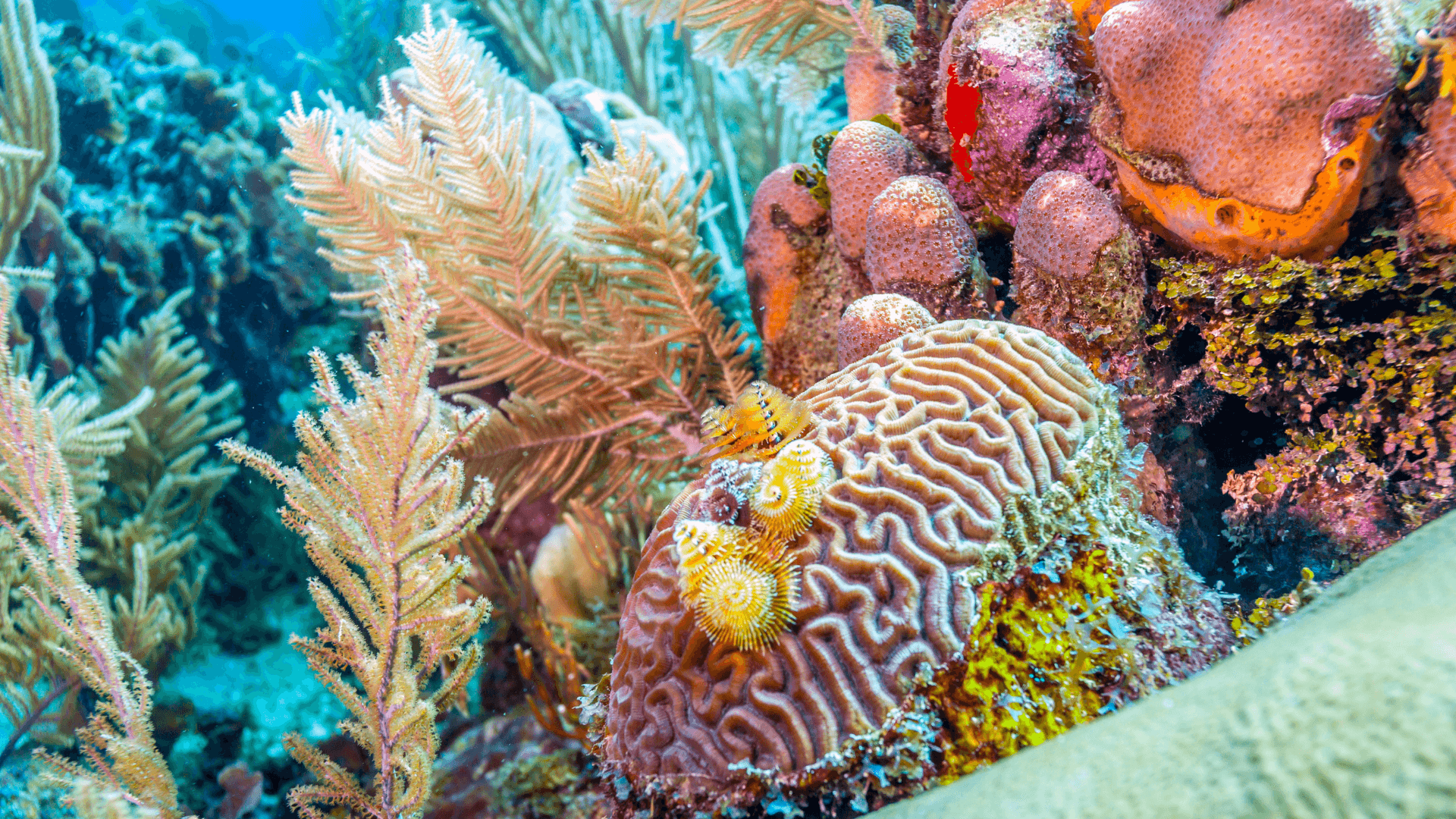Life on Another Planet? Life-Linked Gas Detected on Exoplanet K2-18b
Life on Another Planet? Life-Linked Gas Detected on Exoplanet K2-18b
Life on Another Planet? Life-Linked Gas Detected on Exoplanet K2-18b
Apr 18, 2025
Apr 18, 2025

Artist's impression of the exoplanet K2-18b (on the right) orbiting the red dwarf star K2-18. Credit: ESA/Hubble, CC BY 4.0 <https://creativecommons.org/licenses/by/4.0>, via Wikimedia Commons.
Artist's impression of the exoplanet K2-18b (on the right) orbiting the red dwarf star K2-18. Credit: ESA/Hubble, CC BY 4.0 <https://creativecommons.org/licenses/by/4.0>, via Wikimedia Commons.
Scientists have detected possible signs of a life-related gas on K2-18b, 124 light-years from Earth. Could this be a milestone in the search for extraterrestrial life? Discover what’s known so far.
Scientists have detected possible signs of a life-related gas on K2-18b, 124 light-years from Earth. Could this be a milestone in the search for extraterrestrial life? Discover what’s known so far.
The universe may be sending us revealing clues. In a promising discovery, researchers have announced the potential detection of a life-associated gas in the atmosphere of exoplanet K2-18b, located 124 light-years from Earth. The analysis was performed using data from the James Webb Space Telescope (JWST), the most advanced astronomical instrument ever launched.
The study is led by Professor Nikku Madhusudhan of the University of Cambridge, whose team is behind this potentially historic finding.
Which Gas Was Detected?
The researchers identified signatures of dimethyl sulfide (DMS) or dimethyl disulfide (DMDS)—compounds on Earth produced exclusively by living organisms, especially marine phytoplankton and certain bacteria.
Estimated concentrations on K2-18b would be thousands of times higher than those on our planet, raising the intriguing possibility: could this world harbor life?
Scientific Caution: Not Yet Proof of Life
Despite the excitement, scientists urge caution. The current detection confidence is at three sigma (≈99.7% certainty), which is insufficient for a definitive claim that requires five sigma confidence.
Madhusudhan’s team plans further JWST observations to reduce uncertainty and achieve a more robust confidence level.
Alternative Explanations Under Investigation
It’s paramount to consider nonbiological sources of DMS. Some researchers are testing in laboratories whether geological or chemical processes, yet unknown, could generate this gas.
Another hypothesis suggests that K2-18b might possess a molten-rock ocean rather than liquid water, which precludes Earth-like life. Furthermore, some believe K2-18b is a mini gas giant without a solid surface. On the other hand, the absence of ammonia hints at possible water presence, keeping the debate alive.
Ongoing Scientific Debate
This discovery has sparked intense discussion among experts. Scientists like Catherine Heymans and Oliver Shorttle highlight uncertainties in the planet’s atmospheric composition and the true origin of the detected signal.
Meanwhile, NASA’s Dr. Nicolas Wogan proposes that K2-18b is a gas giant, contrary to earlier JWST–based analyses.
What’s Next?
New JWST observations are already scheduled. If these signals are confirmed, the finding could mark one of the most promising advances in modern science, potentially transforming our understanding of life in the universe.
For Professor Madhusudhan, this may represent a decisive step toward answering humanity’s oldest question: Are we alone in the cosmos?
—
Want to follow the latest developments in this discovery? Read the original BBC article here.
The universe may be sending us revealing clues. In a promising discovery, researchers have announced the potential detection of a life-associated gas in the atmosphere of exoplanet K2-18b, located 124 light-years from Earth. The analysis was performed using data from the James Webb Space Telescope (JWST), the most advanced astronomical instrument ever launched.
The study is led by Professor Nikku Madhusudhan of the University of Cambridge, whose team is behind this potentially historic finding.
Which Gas Was Detected?
The researchers identified signatures of dimethyl sulfide (DMS) or dimethyl disulfide (DMDS)—compounds on Earth produced exclusively by living organisms, especially marine phytoplankton and certain bacteria.
Estimated concentrations on K2-18b would be thousands of times higher than those on our planet, raising the intriguing possibility: could this world harbor life?
Scientific Caution: Not Yet Proof of Life
Despite the excitement, scientists urge caution. The current detection confidence is at three sigma (≈99.7% certainty), which is insufficient for a definitive claim that requires five sigma confidence.
Madhusudhan’s team plans further JWST observations to reduce uncertainty and achieve a more robust confidence level.
Alternative Explanations Under Investigation
It’s paramount to consider nonbiological sources of DMS. Some researchers are testing in laboratories whether geological or chemical processes, yet unknown, could generate this gas.
Another hypothesis suggests that K2-18b might possess a molten-rock ocean rather than liquid water, which precludes Earth-like life. Furthermore, some believe K2-18b is a mini gas giant without a solid surface. On the other hand, the absence of ammonia hints at possible water presence, keeping the debate alive.
Ongoing Scientific Debate
This discovery has sparked intense discussion among experts. Scientists like Catherine Heymans and Oliver Shorttle highlight uncertainties in the planet’s atmospheric composition and the true origin of the detected signal.
Meanwhile, NASA’s Dr. Nicolas Wogan proposes that K2-18b is a gas giant, contrary to earlier JWST–based analyses.
What’s Next?
New JWST observations are already scheduled. If these signals are confirmed, the finding could mark one of the most promising advances in modern science, potentially transforming our understanding of life in the universe.
For Professor Madhusudhan, this may represent a decisive step toward answering humanity’s oldest question: Are we alone in the cosmos?
—
Want to follow the latest developments in this discovery? Read the original BBC article here.
The universe may be sending us revealing clues. In a promising discovery, researchers have announced the potential detection of a life-associated gas in the atmosphere of exoplanet K2-18b, located 124 light-years from Earth. The analysis was performed using data from the James Webb Space Telescope (JWST), the most advanced astronomical instrument ever launched.
The study is led by Professor Nikku Madhusudhan of the University of Cambridge, whose team is behind this potentially historic finding.
Which Gas Was Detected?
The researchers identified signatures of dimethyl sulfide (DMS) or dimethyl disulfide (DMDS)—compounds on Earth produced exclusively by living organisms, especially marine phytoplankton and certain bacteria.
Estimated concentrations on K2-18b would be thousands of times higher than those on our planet, raising the intriguing possibility: could this world harbor life?
Scientific Caution: Not Yet Proof of Life
Despite the excitement, scientists urge caution. The current detection confidence is at three sigma (≈99.7% certainty), which is insufficient for a definitive claim that requires five sigma confidence.
Madhusudhan’s team plans further JWST observations to reduce uncertainty and achieve a more robust confidence level.
Alternative Explanations Under Investigation
It’s paramount to consider nonbiological sources of DMS. Some researchers are testing in laboratories whether geological or chemical processes, yet unknown, could generate this gas.
Another hypothesis suggests that K2-18b might possess a molten-rock ocean rather than liquid water, which precludes Earth-like life. Furthermore, some believe K2-18b is a mini gas giant without a solid surface. On the other hand, the absence of ammonia hints at possible water presence, keeping the debate alive.
Ongoing Scientific Debate
This discovery has sparked intense discussion among experts. Scientists like Catherine Heymans and Oliver Shorttle highlight uncertainties in the planet’s atmospheric composition and the true origin of the detected signal.
Meanwhile, NASA’s Dr. Nicolas Wogan proposes that K2-18b is a gas giant, contrary to earlier JWST–based analyses.
What’s Next?
New JWST observations are already scheduled. If these signals are confirmed, the finding could mark one of the most promising advances in modern science, potentially transforming our understanding of life in the universe.
For Professor Madhusudhan, this may represent a decisive step toward answering humanity’s oldest question: Are we alone in the cosmos?
—
Want to follow the latest developments in this discovery? Read the original BBC article here.

Compartilhar em:
Ver Também
Ver Também

Microplásticos são detectados em fluido ovariano: o que isso significa para a fertilidade humana?
Apr 22, 2025

Crise humanitária em Mianmar: milhões precisam de ajuda após terremotos devastadores
Apr 21, 2025

Vida em outro planeta? Gás ligado à vida é detectado no exoplaneta K2-18b
Apr 18, 2025

Lobos terríveis recriados? Conheça os animais geneticamente modificados pela Colossal Biosciences
Apr 11, 2025

Segurança digital e inteligência artificial: soluções e desafios em 2025
Apr 3, 2025

Saúde cardiovascular em comunidades rurais: estudo revela impactos dos fatores sociais
Apr 1, 2025

Calor inesperado marca o primeiro dia da primavera de 2025 no Reino Unido: sinal das mudanças climáticas?
Mar 21, 2025

DeepSeek AI: o chatbot chinês que está sacudindo o mercado global
Feb 7, 2025

Estudo revela que a vida social ativa pode reduzir o risco de demência
Feb 4, 2025

Ano Novo Lunar 2025: a chegada do Ano da Serpente
Jan 30, 2025

Nova hipótese sobre a origem dos dinossauros desafia conceitos tradicionais
Jan 27, 2025

Ambiente potencialmente habitável em Marte é descoberto pelo Perseverance
Dec 20, 2024

As emoções e o corpo humano: conexões milenares nos textos neo-assírios
Dec 20, 2024

Estudo relaciona poluição do ar ao risco de tromboembolismo venoso
Dec 20, 2024

Colapso da plataforma de gelo Conger: alerta para a Antártica Oriental
Dec 20, 2024

Revolução XRISM: novas descobertas sobre buracos negros supermassivos
Oct 15, 2024

Estudo aponta que duplicação do gene AMY1, relacionado à digestão de amido, precede a agricultura
Oct 14, 2024

Nascimentos na UE caem para menos de 4 milhões pela primeira vez desde 1960
Oct 11, 2024

Escavação na Dinamarca revela 50 esqueletos Viking incrivelmente preservados
Oct 10, 2024

Estudo indica maior incidência de asma e rinite alérgica em pessoas nascidas no outono e inverno na Finlândia
Oct 9, 2024

Estudo demonstra semelhanças entre a puberdade de adolescentes da Idade do Gelo e jovens modernos
Oct 8, 2024

Análise de DNA em múmias chinesas de 3.600 anos revela queijo mais antigo do mundo
Oct 7, 2024

Estudo revela estabilidade genética de populações da África Austral por 10 milênios
Oct 4, 2024

Nove lugares míticos que podem ter existido, segundo descobertas arqueológicas
Oct 3, 2024

Como os direitos humanos podem salvar recifes de coral e responsabilizar governos
Oct 2, 2024

Relatório da Carbon Brief aponta que 2024 pode ser o ano mais quente da história
Sep 4, 2024

Clima determina a distribuição de mamíferos, revela estudo da Universidade Estadual da Carolina do Norte
Sep 4, 2024

Estudo sugere que 'hotspots' de fósseis na África distorcem a visão da evolução humana
Sep 3, 2024

Ruído incomum na Starliner de Boeing intriga astronauta da NASA
Sep 3, 2024

Estudo revela que o microbioma humano é altamente individualizado
Sep 2, 2024

Compartilhar em:

Compartilhar em:

Microplásticos são detectados em fluido ovariano: o que isso significa para a fertilidade humana?
Apr 22, 2025

Crise humanitária em Mianmar: milhões precisam de ajuda após terremotos devastadores
Apr 21, 2025

Vida em outro planeta? Gás ligado à vida é detectado no exoplaneta K2-18b
Apr 18, 2025

Lobos terríveis recriados? Conheça os animais geneticamente modificados pela Colossal Biosciences
Apr 11, 2025

Segurança digital e inteligência artificial: soluções e desafios em 2025
Apr 3, 2025

Saúde cardiovascular em comunidades rurais: estudo revela impactos dos fatores sociais
Apr 1, 2025

Calor inesperado marca o primeiro dia da primavera de 2025 no Reino Unido: sinal das mudanças climáticas?
Mar 21, 2025

DeepSeek AI: o chatbot chinês que está sacudindo o mercado global
Feb 7, 2025

Estudo revela que a vida social ativa pode reduzir o risco de demência
Feb 4, 2025

Ano Novo Lunar 2025: a chegada do Ano da Serpente
Jan 30, 2025

Nova hipótese sobre a origem dos dinossauros desafia conceitos tradicionais
Jan 27, 2025

Ambiente potencialmente habitável em Marte é descoberto pelo Perseverance
Dec 20, 2024

As emoções e o corpo humano: conexões milenares nos textos neo-assírios
Dec 20, 2024

Estudo relaciona poluição do ar ao risco de tromboembolismo venoso
Dec 20, 2024

Colapso da plataforma de gelo Conger: alerta para a Antártica Oriental
Dec 20, 2024

Revolução XRISM: novas descobertas sobre buracos negros supermassivos
Oct 15, 2024

Estudo aponta que duplicação do gene AMY1, relacionado à digestão de amido, precede a agricultura
Oct 14, 2024

Nascimentos na UE caem para menos de 4 milhões pela primeira vez desde 1960
Oct 11, 2024

Escavação na Dinamarca revela 50 esqueletos Viking incrivelmente preservados
Oct 10, 2024

Estudo indica maior incidência de asma e rinite alérgica em pessoas nascidas no outono e inverno na Finlândia
Oct 9, 2024

Estudo demonstra semelhanças entre a puberdade de adolescentes da Idade do Gelo e jovens modernos
Oct 8, 2024

Análise de DNA em múmias chinesas de 3.600 anos revela queijo mais antigo do mundo
Oct 7, 2024

Estudo revela estabilidade genética de populações da África Austral por 10 milênios
Oct 4, 2024

Nove lugares míticos que podem ter existido, segundo descobertas arqueológicas
Oct 3, 2024

Como os direitos humanos podem salvar recifes de coral e responsabilizar governos
Oct 2, 2024

Relatório da Carbon Brief aponta que 2024 pode ser o ano mais quente da história
Sep 4, 2024

Clima determina a distribuição de mamíferos, revela estudo da Universidade Estadual da Carolina do Norte
Sep 4, 2024

Estudo sugere que 'hotspots' de fósseis na África distorcem a visão da evolução humana
Sep 3, 2024

Ruído incomum na Starliner de Boeing intriga astronauta da NASA
Sep 3, 2024

Estudo revela que o microbioma humano é altamente individualizado
Sep 2, 2024
